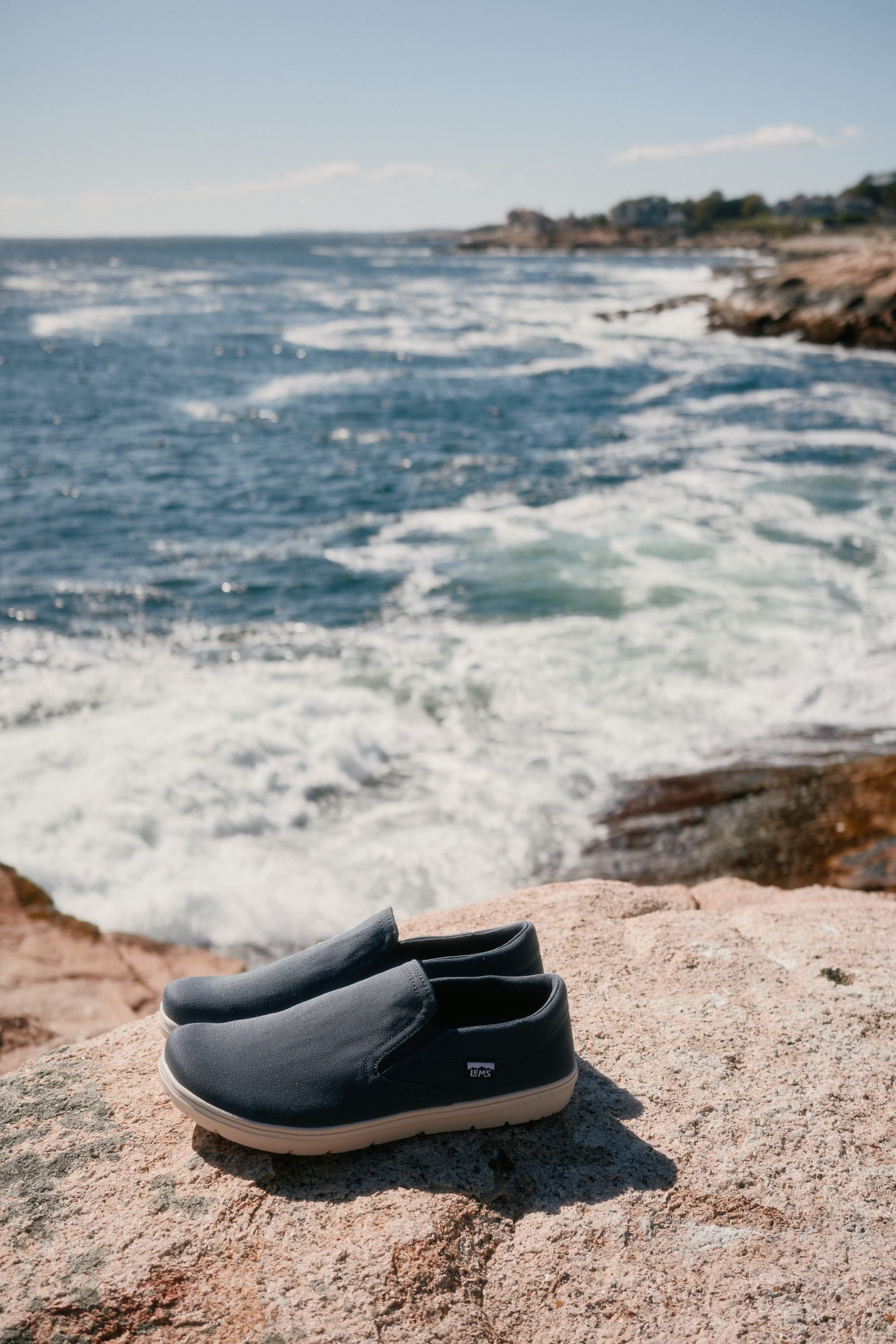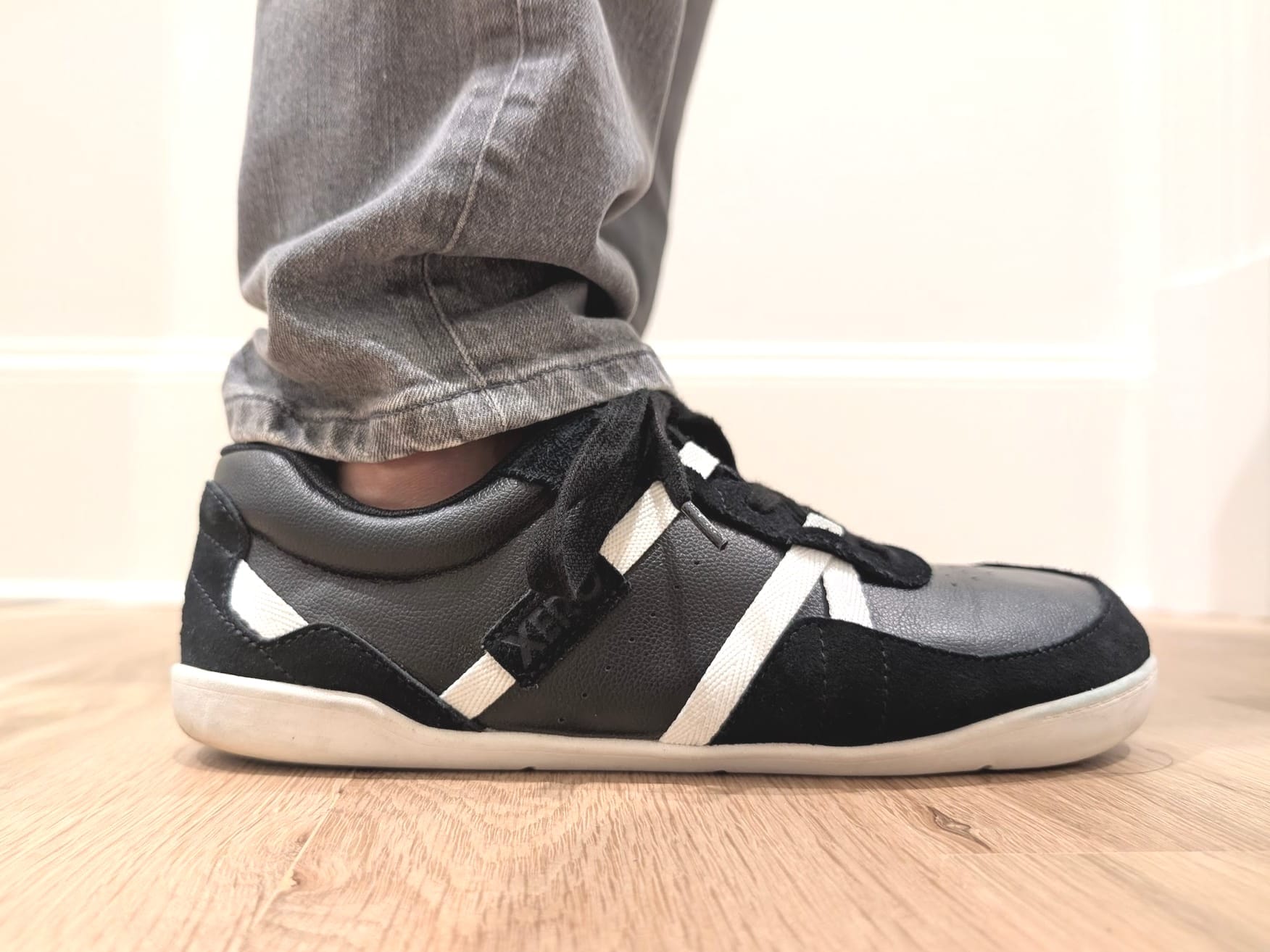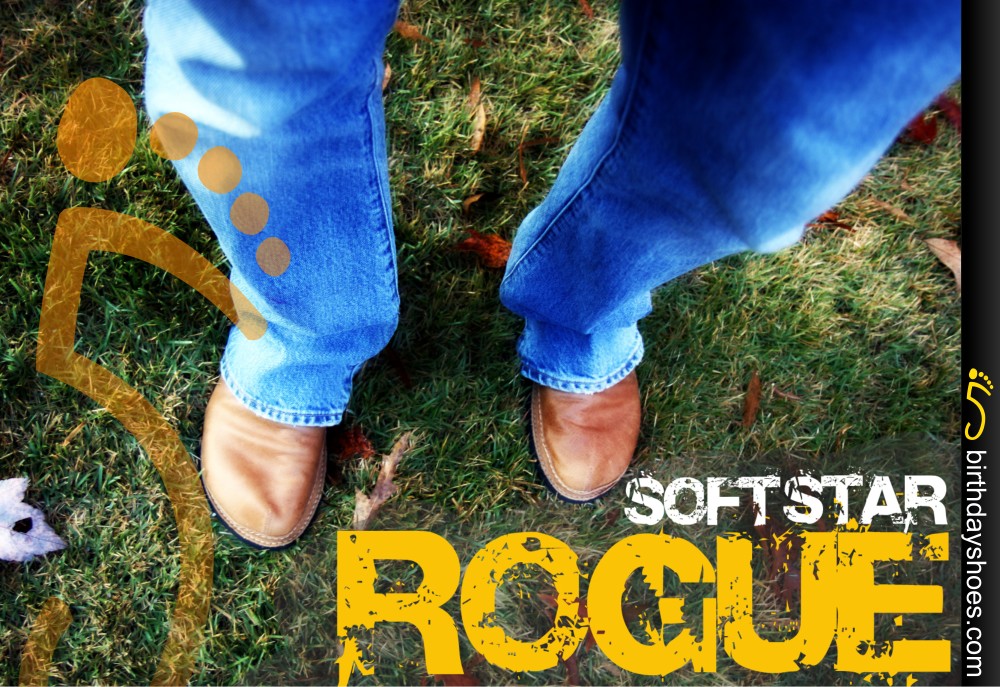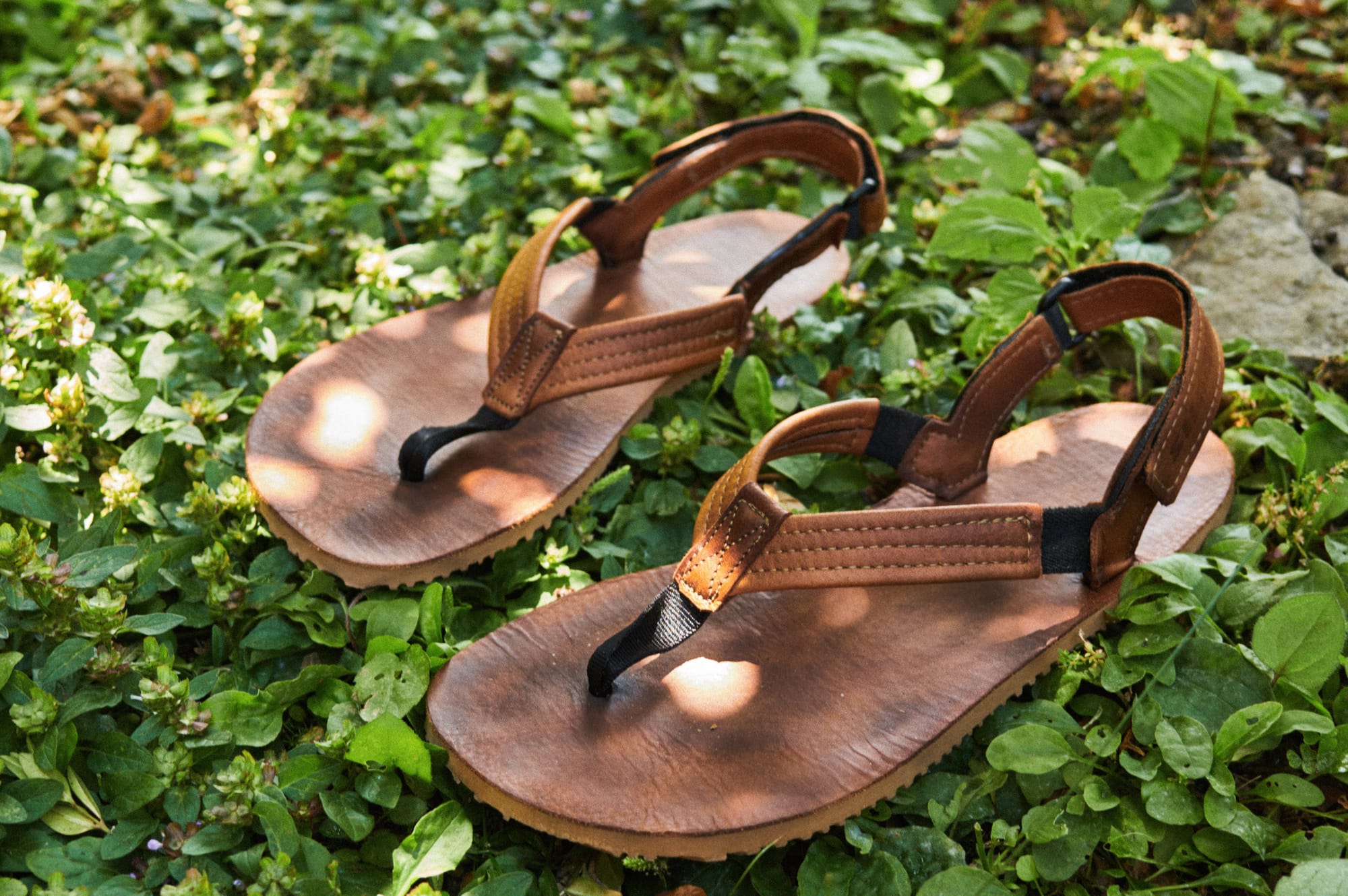Gladsoles ECO Huaraches Review
The ECO is an interesting new model from Gladsoles that is made entirely from upcycled car tires. There is 5.5mm of rubber for tons of groundfeel and flexibility. Huarache lovers and “Born To Run” readers should definitely give this one a look! Read on to hear my thoughts on this eco-friendly, custo
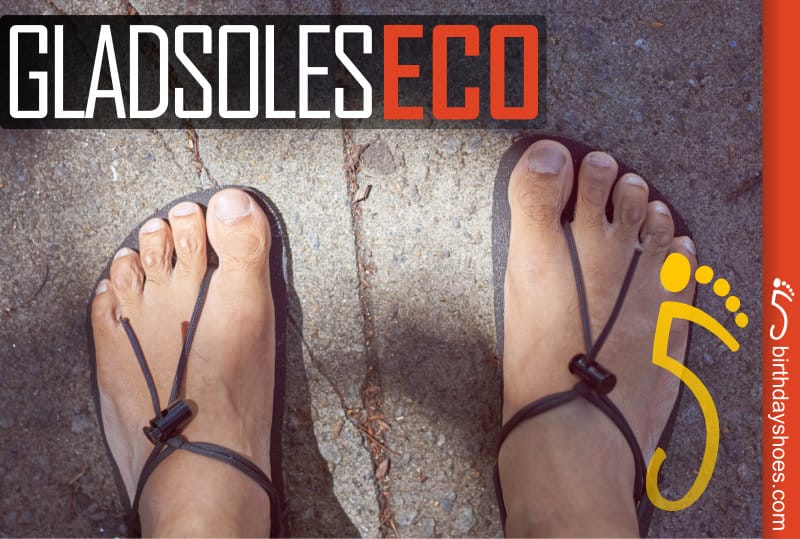
The ECO is an interesting new model from Gladsoles that is made entirely from upcycled car tires. There is 5.5mm of rubber for tons of groundfeel and flexibility. Huaraches lovers and “Born To Run” readers should definitely give this one a look!
Read on to hear my thoughts on this eco-friendly, custom-cut huarache!
Overview
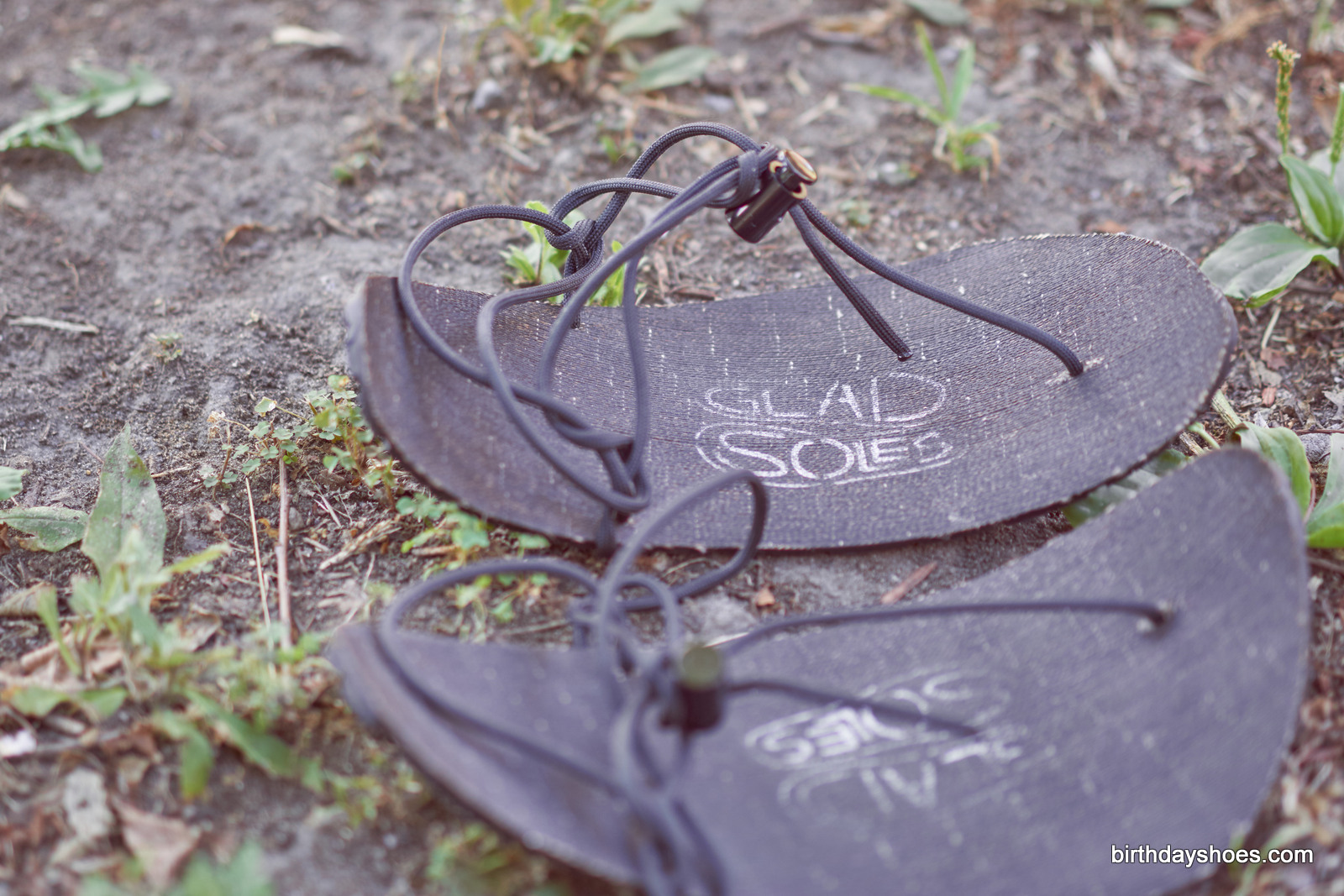
What Gladsoles Says about the Gladsoles ECO:
GladSoles ECO, is THE WORLD'S FIRST Eco-Friendly, custom-made-to-size sandal on the market, because it's made from 100% Upcycled Rubber Tires. It is approximately 5.5mm thin, has a non-slip nylon footbed, and is extremely flexible. Great for all of your on and off-road adventures. It has an aggressive tread that really grips the roads and trails equally well.
Weight — 5.0 oz
Total Stack Height — 5.5mm of tire rubber and non-slip nylon footbed
Barefoot scale — 5.5mm Winter Tire Tread — Excellent for experienced runners, die-hard minimalists, and a great choice for walking around town.
Ideal Uses — All around Use: Experienced Road running, technical trails, hiking, casual walking around,
Pros
- Incredibly sticky rubber compound
- Great ground feel
- Excellent traction and durability
- Custom foot shape and tying
- Lightweight (but heavier than previous Gladsole sandals)
- Airy (no more stinky feet!)
Cons
- Tying system takes some practice and getting used to
- Can be uncomfortable, if not properly tied
- Can be slappier than other huaraches
Photos
Sizing
Sizing for all Gladsole sandals is pretty much perfect. Each pair is custom cut to fit each of your feet. Whether you have narrow feet, wide feet, high arched, flat, fat, and everything in between, you will find an excellent shape with Gladsoles because these shoes are your feet!
The process was incredibly simple and took about 2 minutes. I traced my foot on two pieces of paper (templates are provided onGladsole’s website) and etched some ruler makes to serve as a scale. After that, I marked where my toe strap would be between my big and index toe, emailed it to Gladsoles for cutting! As an alternative, you can also mail them your tracings.
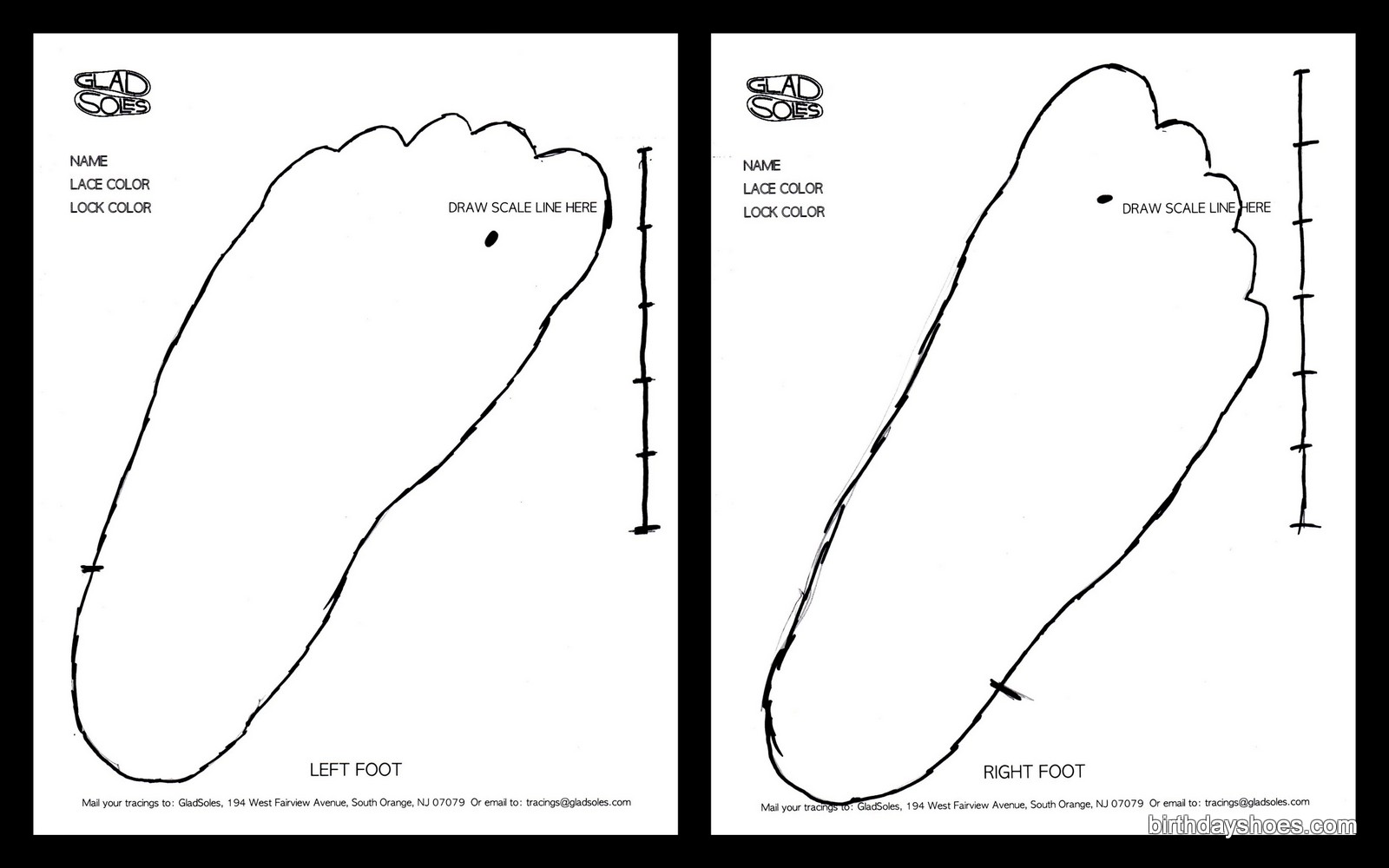
As you can see from my tracings, I have VERY wide, ducklike feet and the fitting process of running shoes and all footwear in general has always been a difficult process.
As a child, my parents would actually purchase shoes a few sizes larger than what I should have been wearing because larger shoe sizes are also made wider to accommodate the shape of a normal foot.
Sole
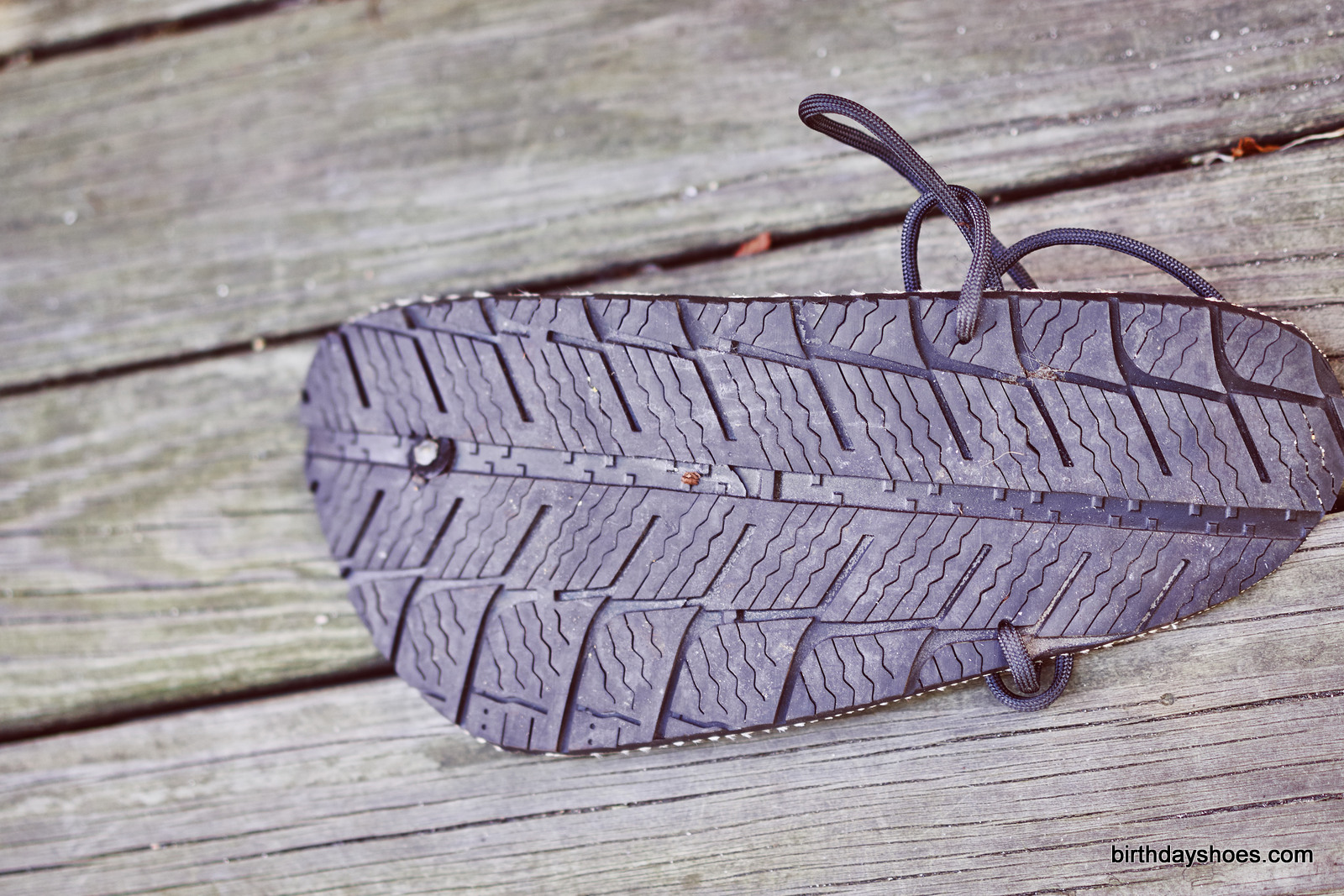
The Gladsole ECO sole is made from a 5.5 upper tread cut from upcycled (not recycled!) car tires and topped with a nylon footbed. This sole is a collaborative effort with the GomaVial leisure sandal company and is reminiscent of Born to Run, which showed the Tarahumara in the Copper Canyon marking sandals from discarded car tires.
The distinction of “upcycled”, rather than recycled is worth mentioning because each sole is not made from old tires or a composite of tires. Instead, the tires used by Gladsoles and GomaVial are recently manufacturered tires that were not up to the manufacturer’s standards for cars and trucks, but are perfectly suitable for use with human beings.
The sole itself is made from a winter tire for maximum traction and has excellent durability as the rubber compound used by this sole was originally manufactured and spec’d for thousands of miles of rolling, cornering, and braking on asphalt by a one-ton+ metal chassis. It is the most durable sole that Gladsole uses and it just might be the most versatile sole material on the market.
The first thing you will notice about this sole is that it is incredibly grippy. In fact, it is one of the grippiest soles I have ever used—hurache or otherwise. Obviously, because these were originally made for cars, you would expect them to provide plenty of traction in a variety of surfaces and situations, but I have another theory as to why these sandals are so incredibly grippy.
As these were cut from winter tires, the benefits of using winter tires in all seasonal situations are imparted. Obviously, the rubber maintains excellent grip in cold conditions—winter tires are made differently from all-season and summer tires to preserve traction in the cold temeratures and snow. In extreme cold temperatures, the tread rubber of an all season or summer tire stiffens loses their ability to keep traction. On the other hand, winter tires use a different rubber compounds that is designed to remain flexible and sticky in cold conditions; it is not just the tread that gives winter tires an advantage in the snow.
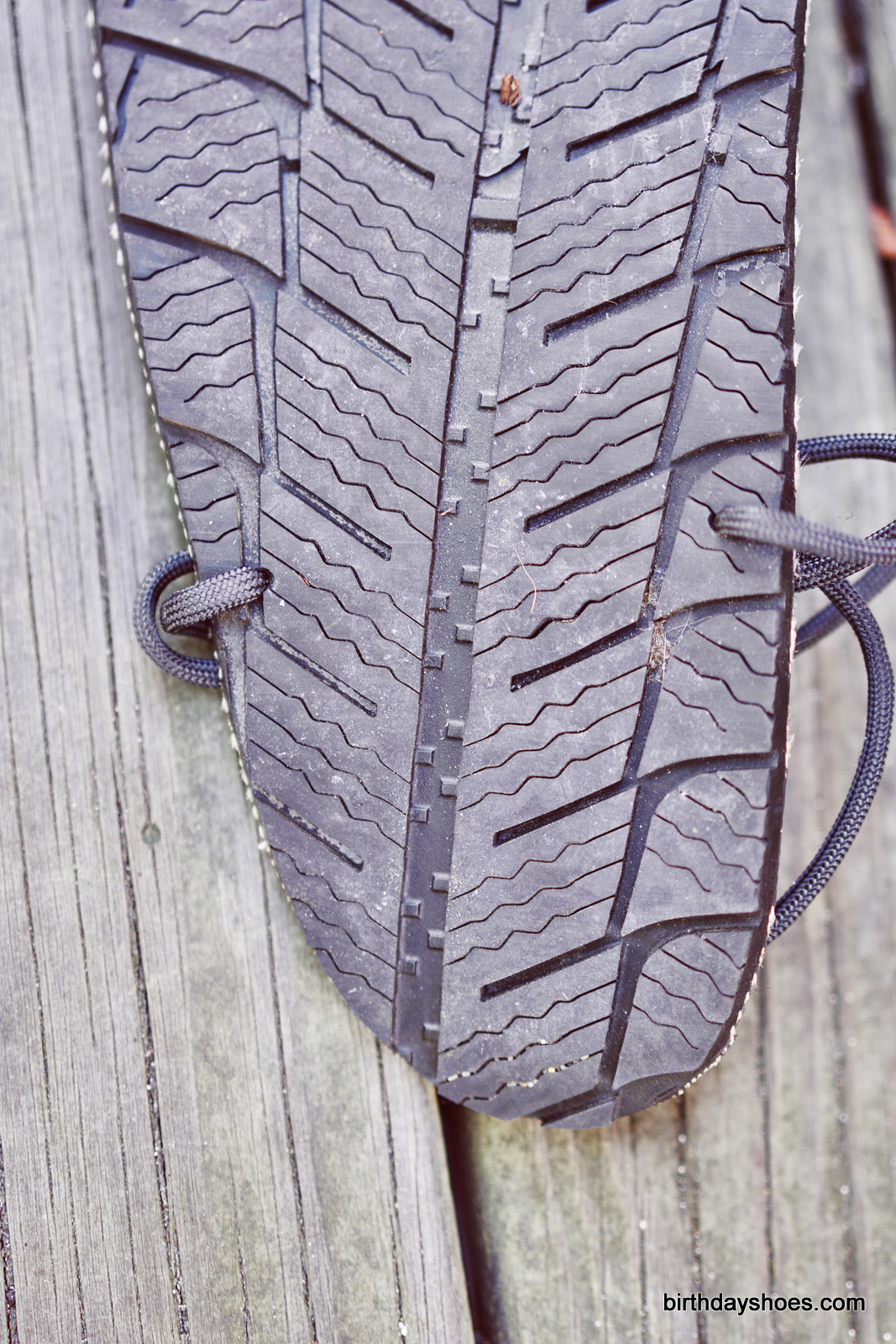
When things get warmer, winter tires can get “gummy” when pushed by the driver and they wear our faster in the summer than their all-season counterparts.
This, of course, is an issue for cars, but is not an issue for human beings. We lack the mass and torque to destroy a winter tire, but we can great benefit from their enhanced flexibility in both warm and cold environments.
As stated earlier, the sole is incredibly grippy, much more so than any other huarache I’ve experienced, both on and off road. To force a cliché, you can turn on a dime with this sole and its flexibility allows you to wrap around rocks, branches, and other obstacles for maximum surface-area adhesion. In terms of the usual sole materials for huaraches, I suppose Cherry, Newflex, or the Unshoes Star sole are somewhat similar in terms of flexibility and function, but this winter tire sole is on another level.
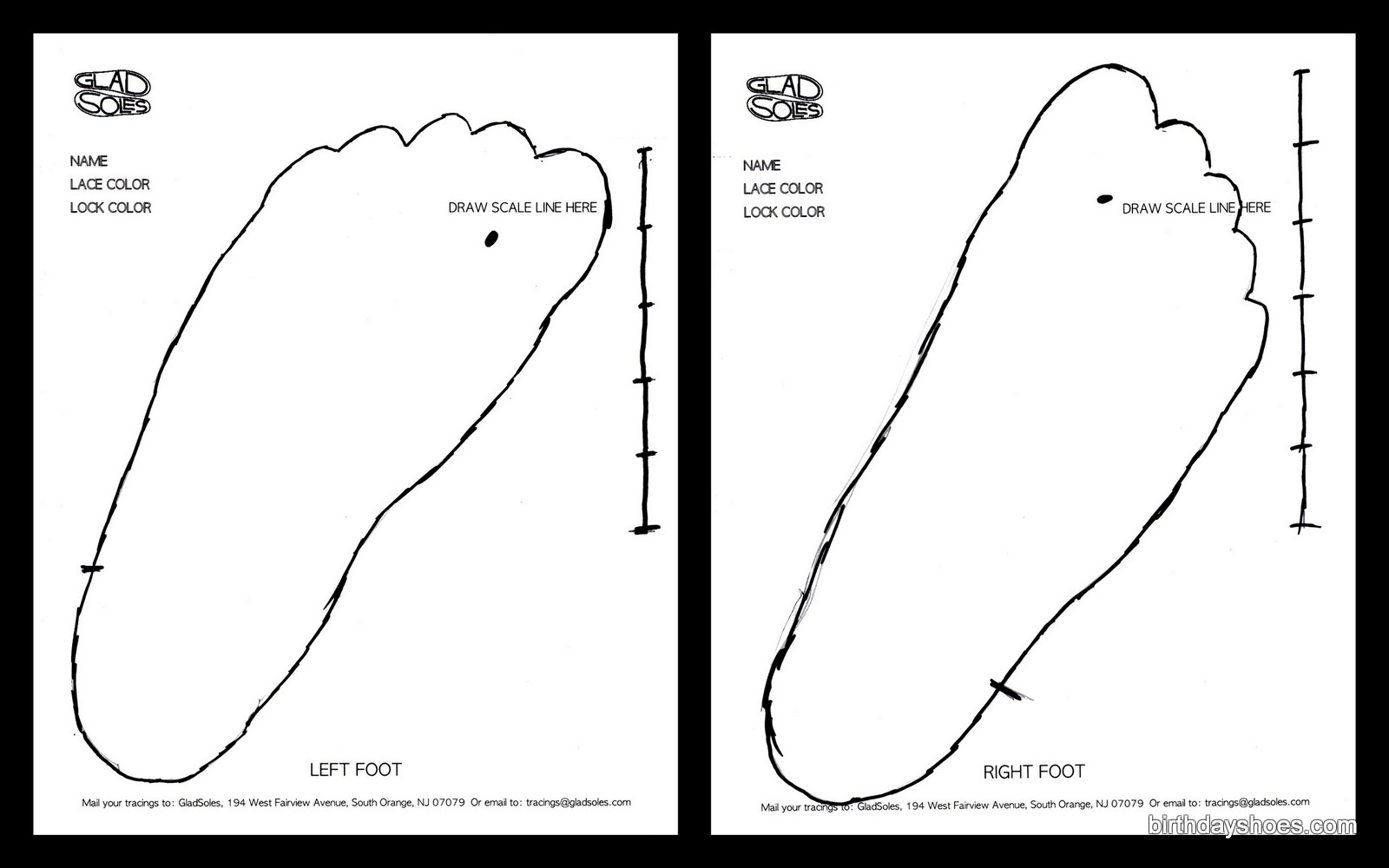
In terms of feel, this sole is not as jarring or stiff as Xeroshoes’ Feel True sole or Vibram Gumlite, but is denser than Vibram Morflex, Woodstock, and Newflex and Unshoes’ Star sole (For Vibram sole comparisons, see this guide). For this reason, while this sole is great for all-around use, road running is best left to minimalist running veterans.
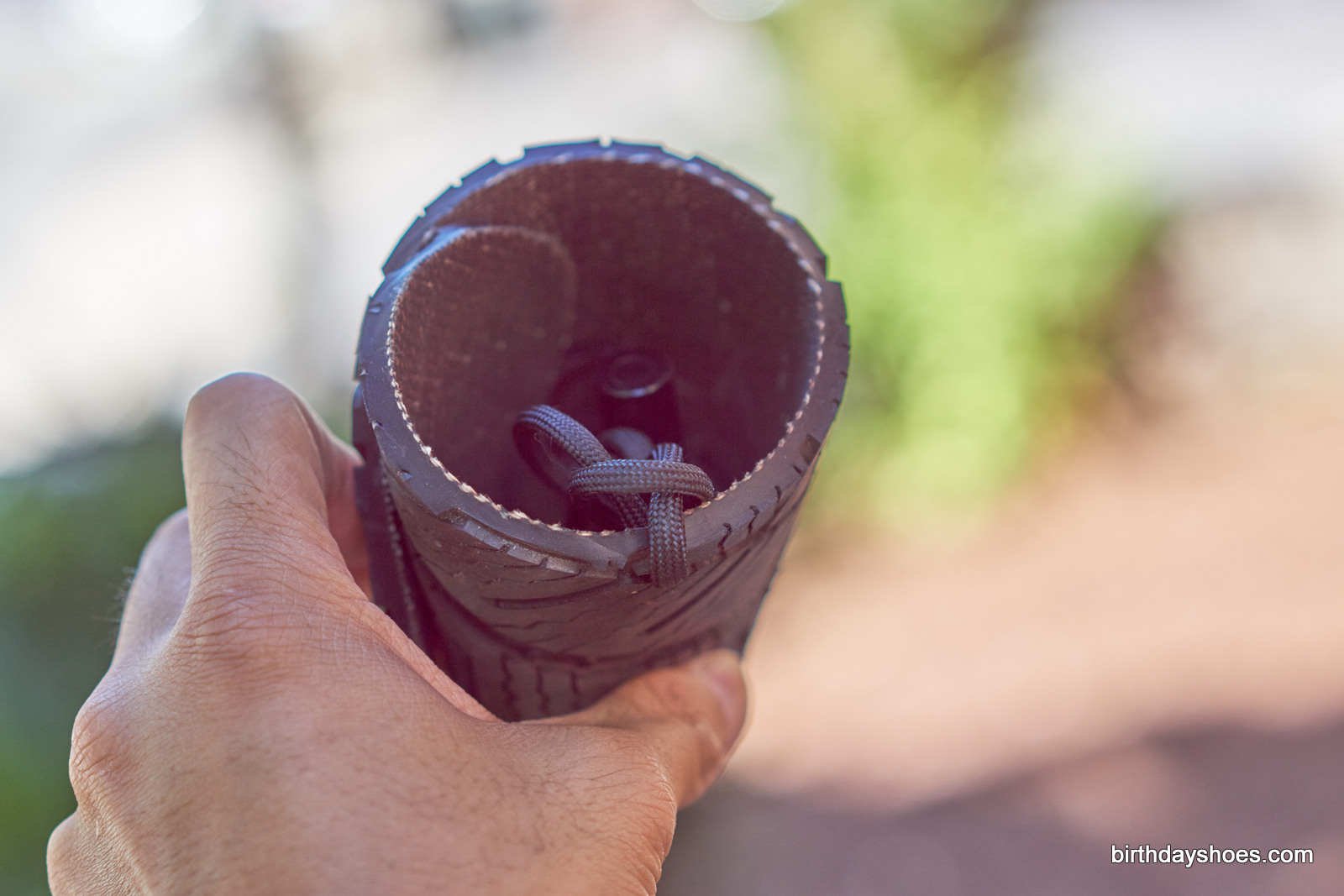
This sole material is quite a bit slappier than the Morflex sole of the Gladsole Originals. You have to be more careful with your tying AND your running technique to be quiet with these shoes. It’s slappiness is somewhat similar to Xeroshoes and requires similar levels of running experience for the most enjoyment. While you hone your technique, it might be a good idea to skip running around your neighborhood in the morning; you’re going to wake the Johnsons with your funny shoes.
Fit and Materials
As with other sandals in the Gladsoles lineup, the ECO uses military strength paracord laces that are strong, durable, and soft on your skin. This paracord freely tied by wrapping the cord around your ankle and reinforcing the points of articulation with loops. When tied properly, you barely even notice them on your feet as you run.
The tying system/procedure is a Gladsole design and is similar to other hand-tied huaraches. After experimenting with many different tying patterns, Gladsoles decided on a system that they deemed best for simplicity, stability, and comfort. There are very detailed instructions and pictures of the tying process on Gladsole’s website and it only takes a couple of attempts to memorize the entire process.
The tying process involves looping the paracord around both sides of your ankle, heel, and around itself, twice over. This process creates a strong and secure tie that maintains its tension while running, while being comfortable.
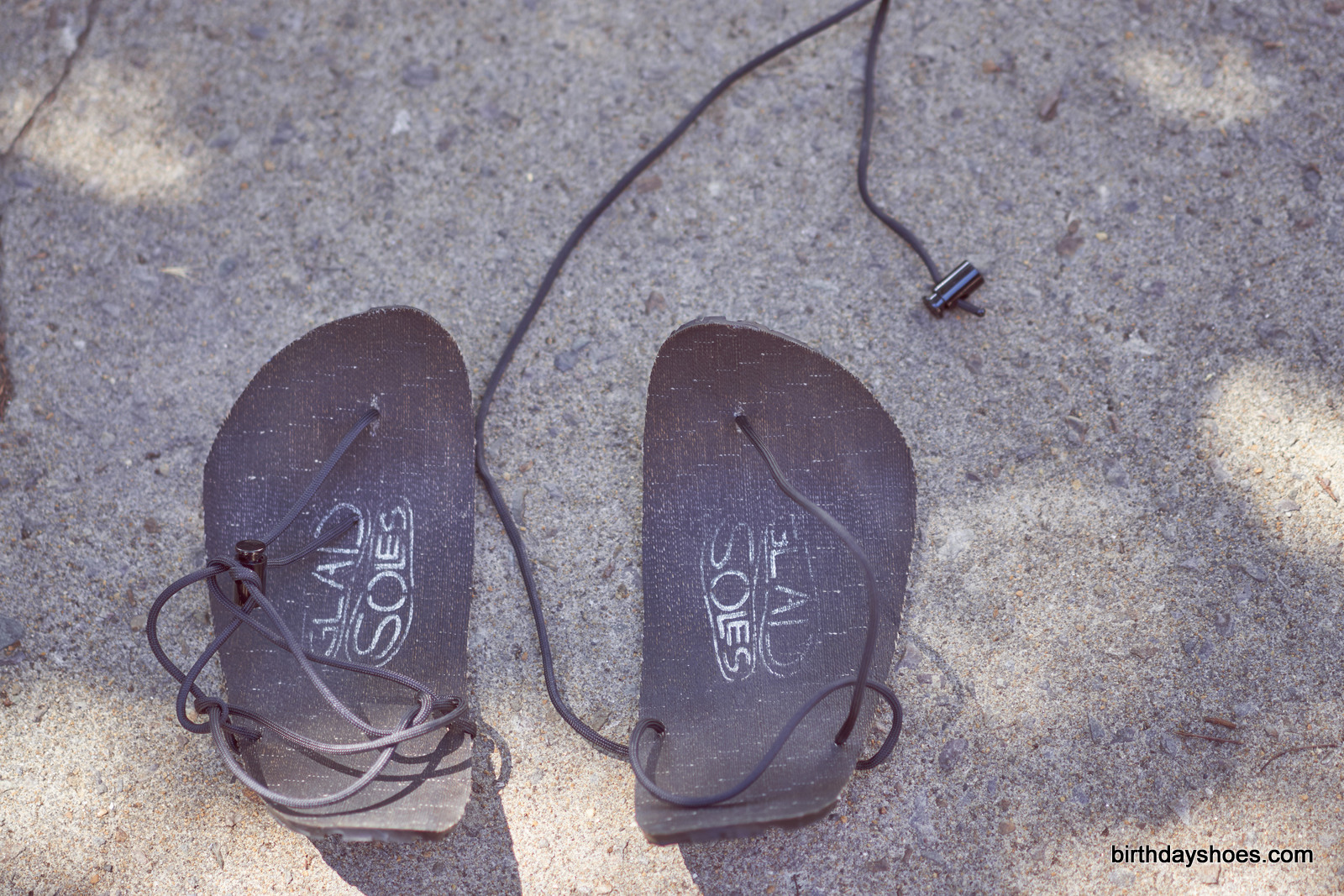
The beauty of this tying system is that it allows for customized fit, tension, and security across the entire sandal. Unlike other huaraches that are pre-tied, you have to fit the self-tied paracord to your own feet in order for everything to work. Much like how the vibram sole is custom cut to fit your foot, the tying system is also made just for your individual foot. You can customize your tying at every step to have more or less slack so each part of your foot is coddled. The heel is especially stable and does not slip when tied properly. The entire system eventually evens out its tension across the entire foot, so even if you tie it a little tightly in some areas, pressure relieved after about 10-15 feet of running.
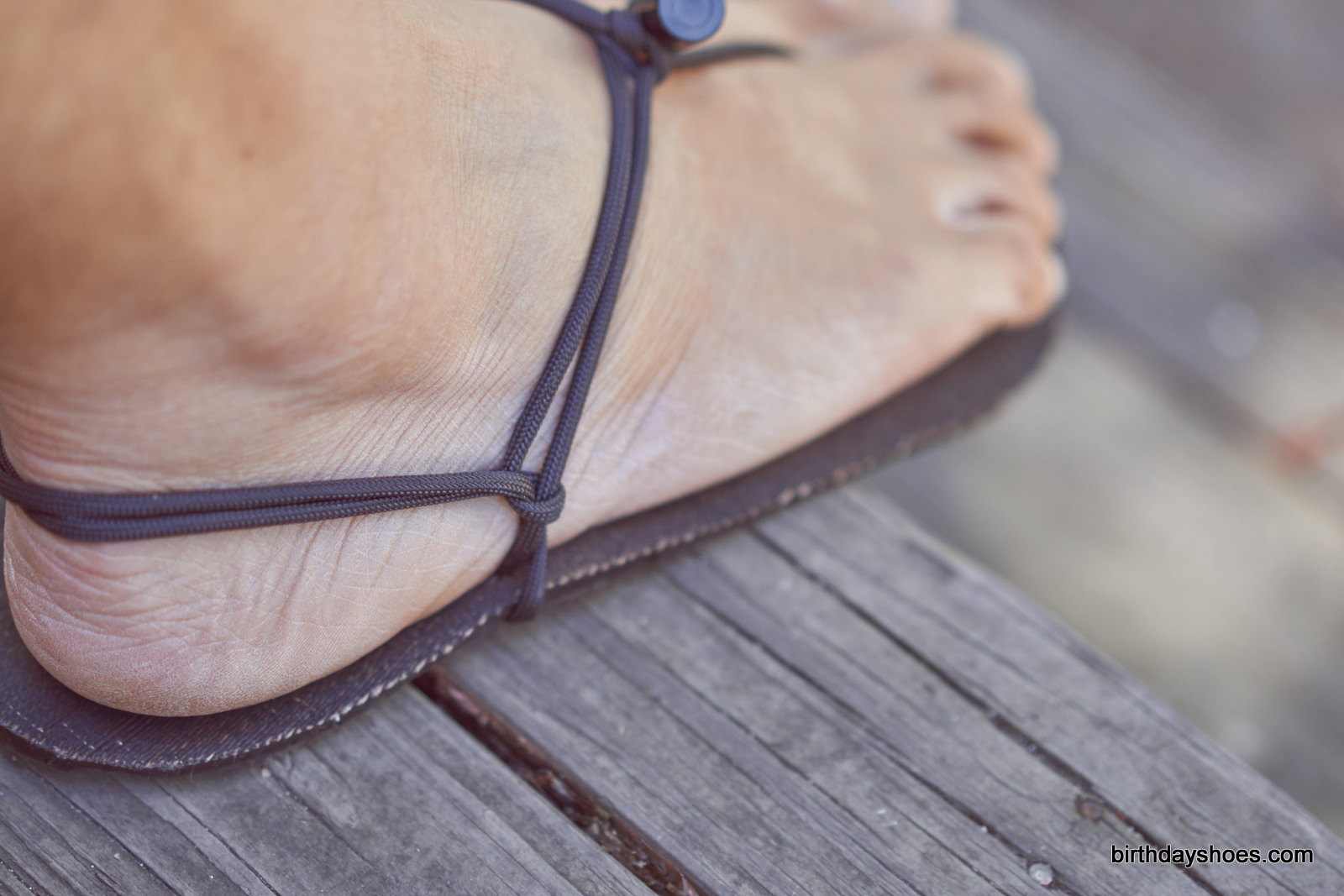
Overall, the tying system does require a little trial and error to learn, but once you get it right, there is no substitute for the combination of custom sole and custom ties.
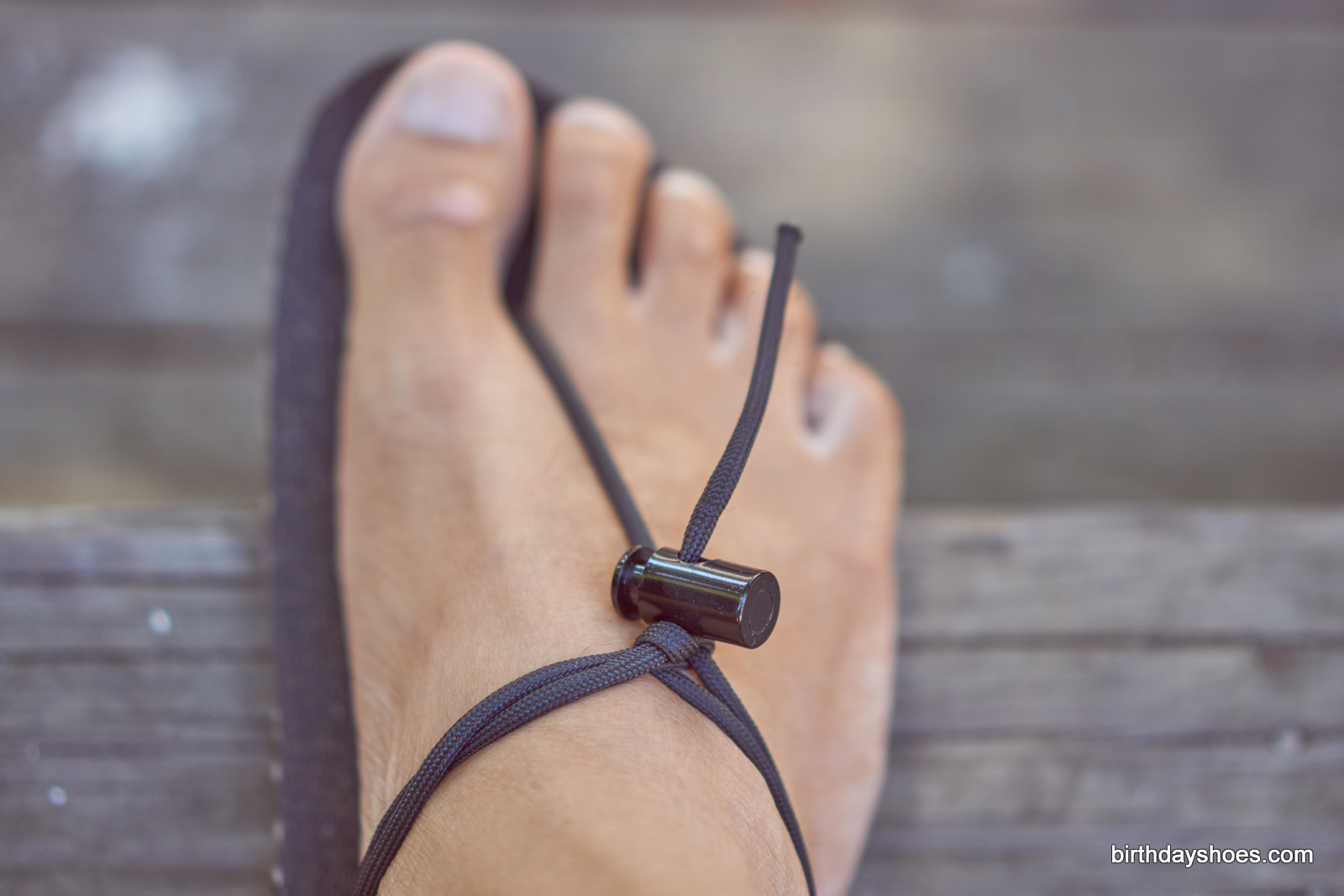
The locking mechanism allows for you to dial in the fit and then keep everything tied together so you can easily slip on and slip off the sandals. I have found that the straps can get tangled up a bit if kept in a gym bag for too long and I would end up retying them, but after tying them for a few days, it became second nature.
I actually find it to be a pleasurable process. While you can tie them once and use the lace lock to loosen and tighten the top part of the strap for easy on and off, I actually prefer to retie them each time I run with them. It helps reinforce the tying process—committing it to memory—and allows me to fine tune the straps to my needs and make micro adjustments.
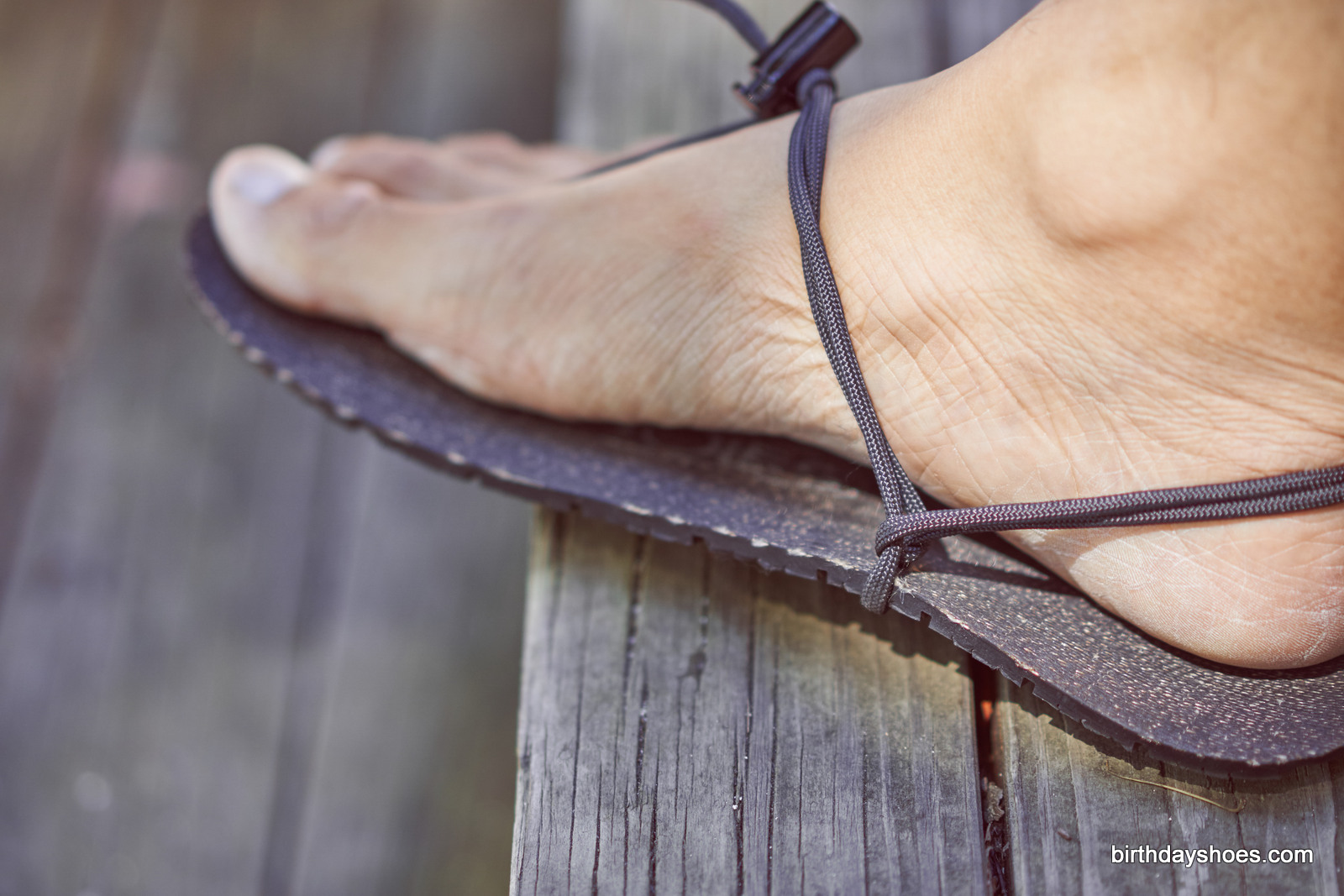
All Gladsoles are shipped with extra paracord and lots of slack. Once you have tied everything correctly and are sure of the fit, you can simply cut the excess cord with scissors and seal it with a match or lighter.
Note:
The tire tread sole has a bit of a curve to it. After lots of running, the curve has flattened out a bit, but it still is not able to flatten out.
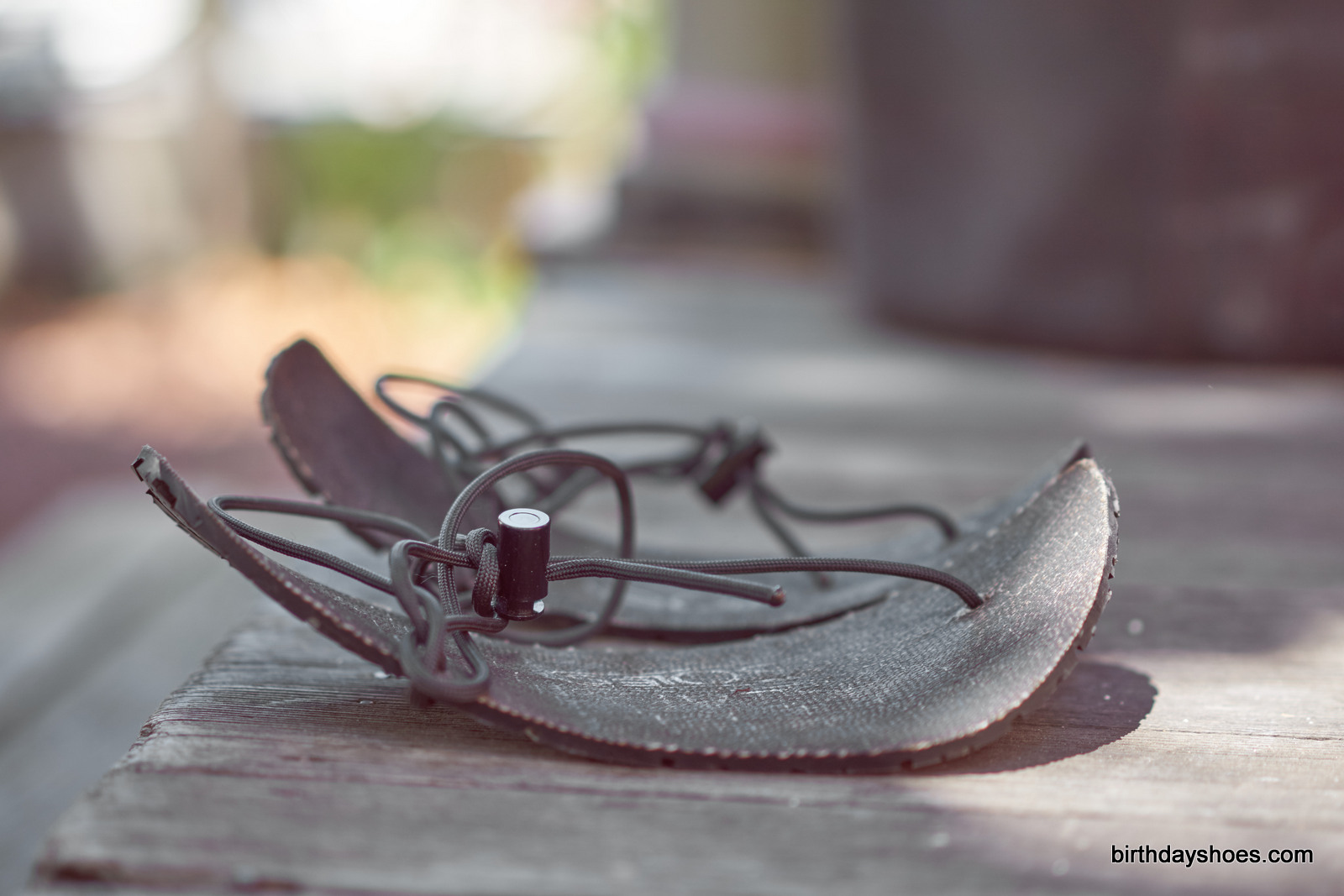
Performance
My favorite running sandal is the Original Gladsole that I reviewed last year. It takes up zero space, weighs nothing, and is the exact shape of my foot! While I have a huge arsenal of running shoes and running sandals at this point in my life (it’s a problem), I still find myself reaching for Gladsoles each time I have to go for a run. I can customize the fit for maximum comfort or speed, eliminating hot spots or problem areas in the process. It is great to never have to worry about my duck feet having any sizing issues, such as overreaching beyond the edge of the sandal while running
I love my Gladsole Originals so much that I ran my first marathon in them (it was great!).

This ECO model is a more capable addition to the lineup and basically replaces all of the functions of the OLD Newflex-soled Gladsoles Trail (the latest version of the Gladsoles Trail uses an 8mm Gumlite sole, which is thicker and sturdier than the older model).
Because the sole is thinner and denser than the Morflex sole of the Original, there is less “give” to your landings, so you have to be more careful and light with your running technique, which is something that even seasoned runners could work on, I found that my first few landings were a bit jarring, but I quickly adjusted my cadence to compensate. The longest run I’ve had with the ECO was somewhere around 20 miles and I hope to get my first ECO marathon down in a few weeks. Much like other Gladsole sandals, the tying system and its simplicity are the ECO’s greatest strengths. With shoes and other, more built up or manufactured sandals, you can have fit issues due to things being designed for a wide variety of uses. However, with the ECO, YOU are the person this sandal was made for. This makes a huge difference in comfort, protection (no more wide feet poking off the sides or narrow feet with tons of excess sole), and its simplicity keeps the weight down.
Summary
The Gladsole ECO is pretty special. Its upcycled sole is very durable, lightweight, flexible, protective and surprisingly grippy. Like other Gladsole sandals, the ECO is custom-cut to your foot AND custom tied to your needs; if you need one or any of the sections of the lacing system to be adjusted, you can infinitely adjust it to your needs. While it does take a bit of trial and error to see what works, but it is incredibly satisfying to have a piece of footwear that has your exact footprint and moves with your every step.
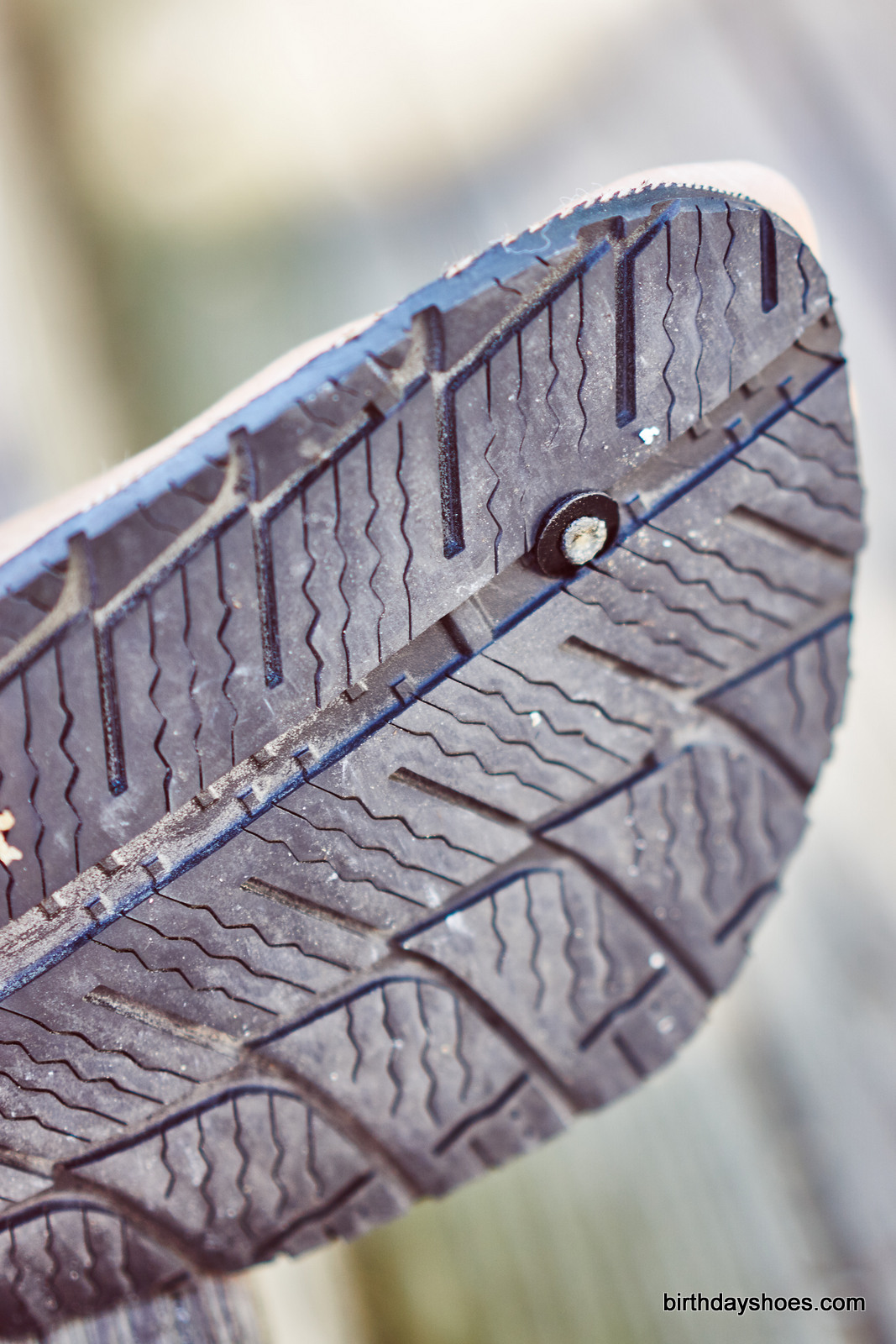
If you are an experienced runner or moderate hiker, the ECO is definitely worth checking out at the Gladsoles website.

